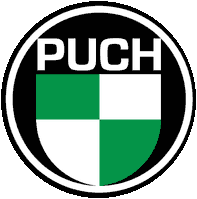Slovenia is South Slavic country. Slavic peoples settled the teritory of todays Slovenia, between the Alps and the Adriatic Sea in two migration waves: the first wave was around year 550 and came from the Moravian lands, while the second wave, coming from the southeast and happened in 568.
Later slavic peoples between the upper Elbe River and the Karavanke mountain were united under the leadership of King Samo (Kralj Samo) This is known as Samo's Tribal Union. The tribal union collapsed after Samo's death, but a smaller Slavic tribal principality Karantania remained, with its center in the present-day region of Carinthia.
Due to pressing danger of Avar tribes from the east, Karantanians accepted union with Bavarians in 745 and later recognized Frankish rule and accepted Christianity in the 8th century. The last Slavic state formation in the region, the principality of Prince Kocelj, lost its independence in 874. Slovenian ethnic territory shrank due to pressing of Germans from the west and the arrival of Hungarians in the Pannonian plain, and stabilized in the present form in the 15th century.
The oldest documents written in a Slovenian language are the Freising manuscripts (Brižinski spomeniki), dated in years between 972 and 1022, found in 1803 in Freising, Germany. The first book printed in Slovenian language is Cattechismus and Abecedarium, written by the Protestant reformer Primož Trubar in 1550.
Slovenian lands were part of the Illyrian provinces, the Austrian Empire and Austria-Hungary.
Many Slovenians emigrated to the United States at the turn of the 20th century, mostly due to economic reasons. Those that settled in Bethlehem, Pennsylvania came to be called Windish. The largest group of Slovenians eventually ended up settling in Cleveland, Ohio and the surrounding area. The second largest group settled in Chicago principally on the Lower West Side, Chicago. Freethinkers were centered around 18th and Racine Ave. in Chicago where where they founded the Slovene National Benefit Society, other Slovenian immigrants went to southwestern Pennsylvania, southeastern Ohio and the state of West Virginia to work in the coal mines and lumber industry. Some Slovenians also went to the Pittsburgh or Youngstown, Ohio areas to work in the steel mills.
Following the 1st World War (1914-1918), they joined other South Slavs in the State of Slovenes, Croats and Serbs, followed by Kingdom of Serbs, Croats and Slovenes, and finally Kingdom of Yugoslavia. In the new system of banovinas (since 1929), Slovenians formed a majority in the Drava Banovina.
In 1920 people in the bilingual regions of Carinthia decided in a referendum that most of Carinthia should remain in Austria. Between the two world wars the westernmost areas inhabited by Slovenians were occupied by Italy.
From end of World War2 till independence in 1991 Slovenia was par of Yugoslavia.
25 June 1991 we gain independence from Yugoslavia in the Ten-Day War. Slovenia joined NATO on 29 March 2004 and the European Union on 1 May 2004.
Slovenia will hold the Presidency of the Council of the European Union in the first half of 2008.
























